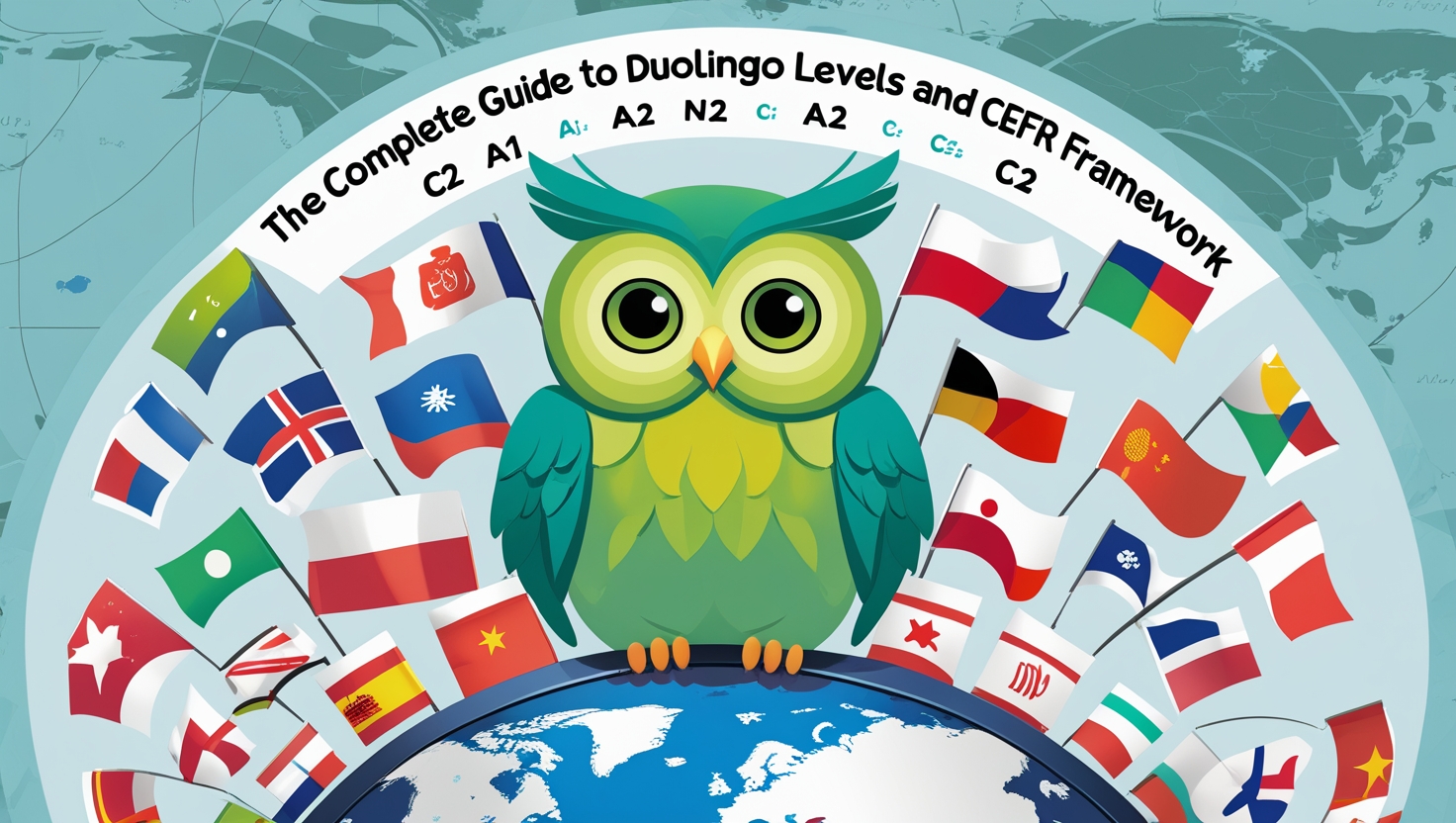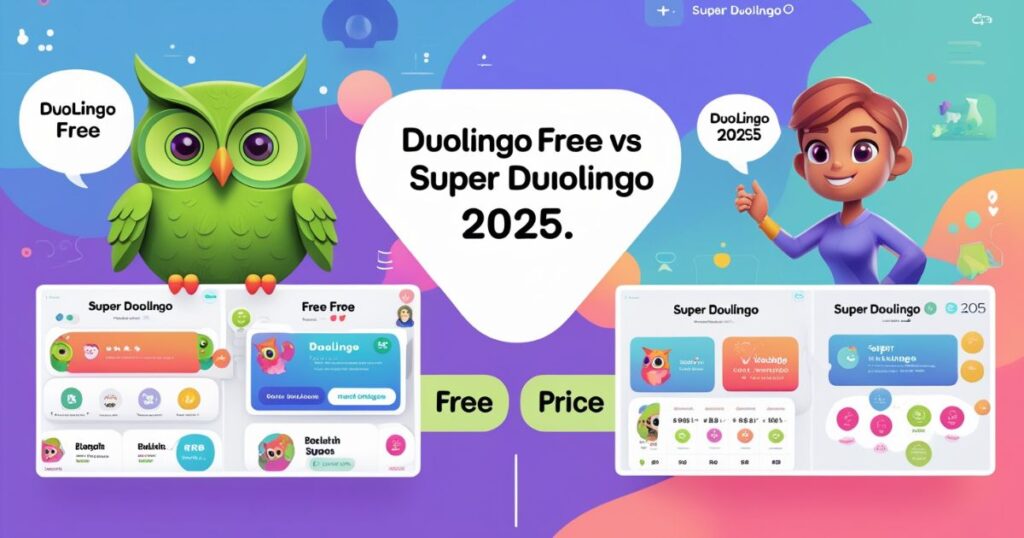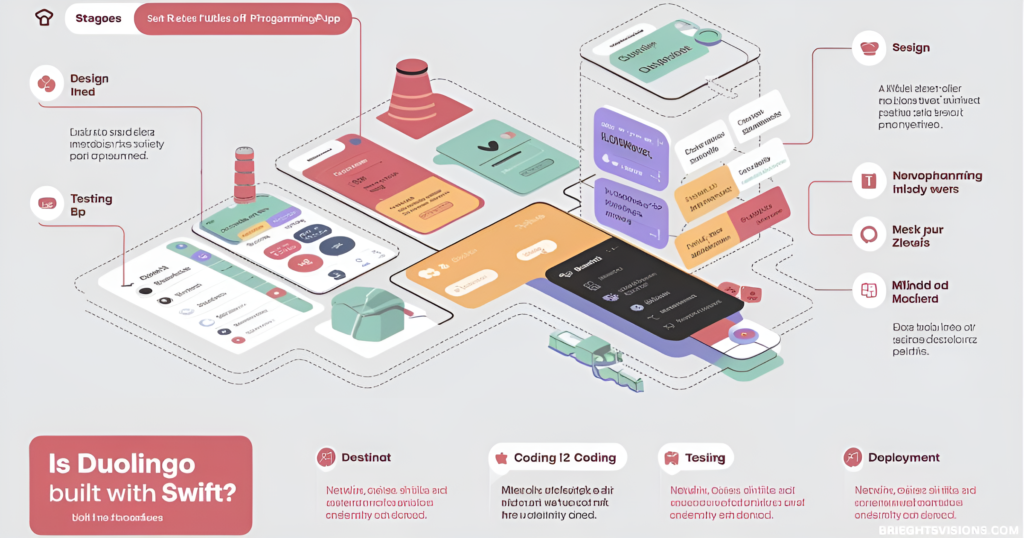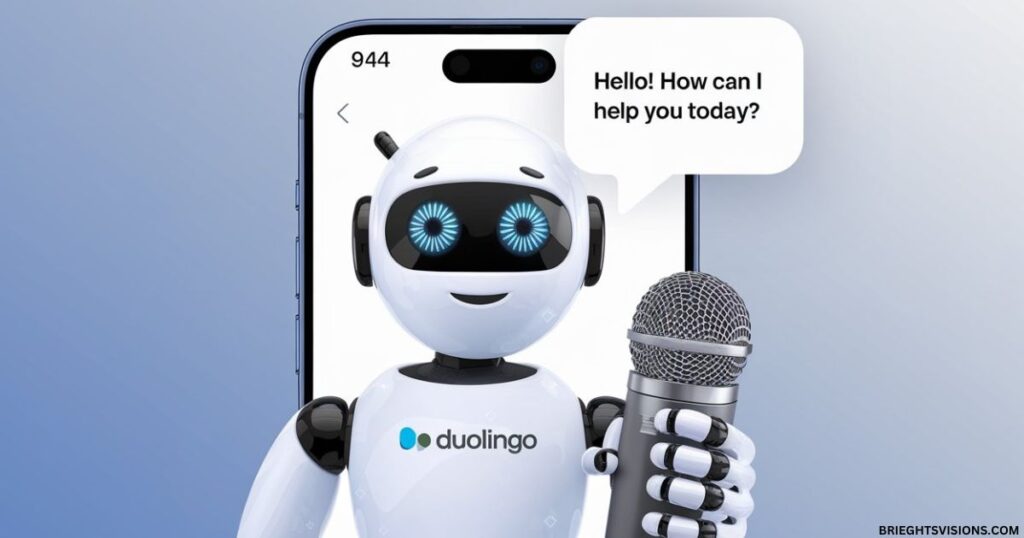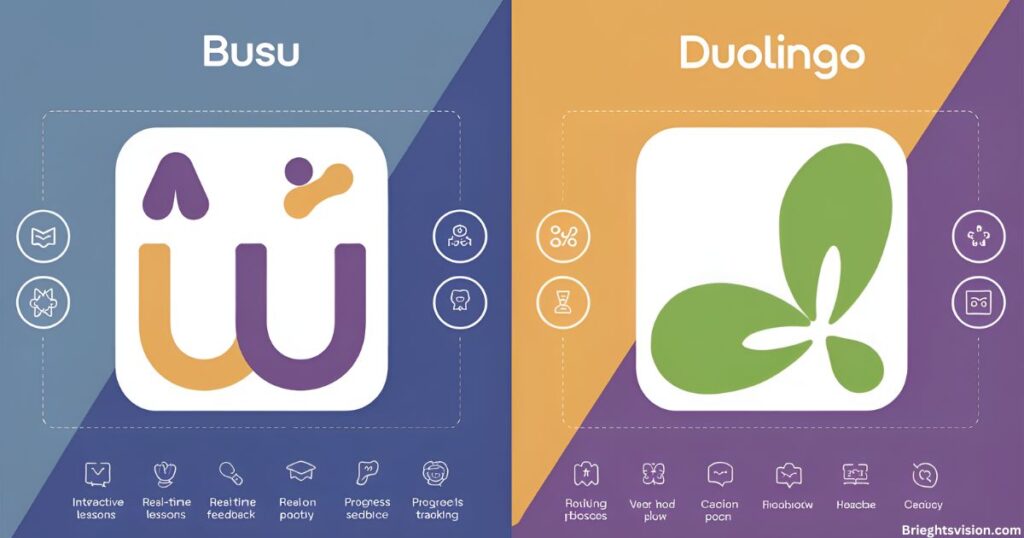Learning a new language has transformed dramatically in the digital era, with language learning platforms like Duolingo leading the charge. At the heart of Duolingo’s success lies its seamless integration with the Common European
Framework of Reference for Languages (CEFR), the gold standard for measuring language proficiency worldwide. Let’s explore how these two systems work together to create an effective learning journey.
Understanding the CEFR Framework
The CEFR framework represents a comprehensive approach to language assessment, breaking down proficiency into six distinct levels. What makes this system particularly powerful is its universal applicability across different languages and learning contexts. When Duolingo adopted this framework, they revolutionized how we approach digital language learning.
Think of the CEFR as a detailed roadmap for your language journey. Starting from basic phrases at A1 to near-native fluency at C2, each level builds upon the previous one in a carefully structured progression. This systematic approach ensures learners develop a solid foundation before tackling more complex language skills.
How Duolingo Adapts CEFR Standards
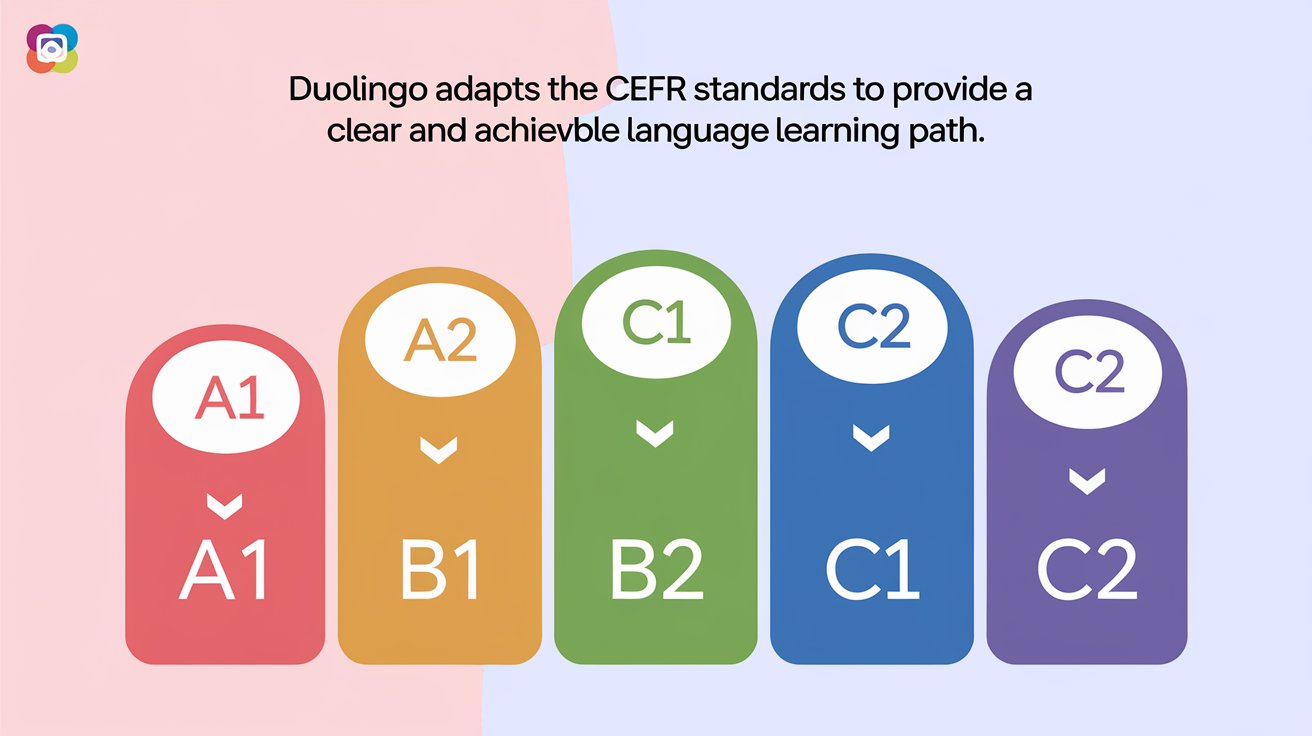
Duolingo has masterfully transformed the academic CEFR standards into an engaging learning experience through personalized learning paths. Their platform uses sophisticated AI in language learning to adapt to each learner’s pace and style, making the journey both effective and enjoyable.
The magic lies in how Duolingo breaks down these formal standards into bite-sized, achievable goals. Through gamified lessons and interactive content, learners progress through CEFR levels almost without realizing the complexity of what they’re achieving. The platform’s adaptive technology ensures that each lesson builds upon previous knowledge while introducing new challenges at just the right moment.
CEFR Levels and Real-World Skills
Here’s a comprehensive breakdown of what each CEFR level means in practical terms:
| CEFR Level | Duolingo Stage | Real-World Capabilities | Estimated Study Hours |
| A1 | Beginner | Basic greetings, simple questions | 70-100 |
| A2 | Elementary | Daily conversations, shopping | 180-200 |
| B1 | Intermediate | Travel situations, opinions | 350-400 |
| B2 | Upper Intermediate | Professional discussions, media | 500-600 |
| C1 | Advanced | Complex topics, academic work | 700-800 |
| C2 | Mastery | Near-native proficiency | 1000+ |
The Science Behind Progress Tracking
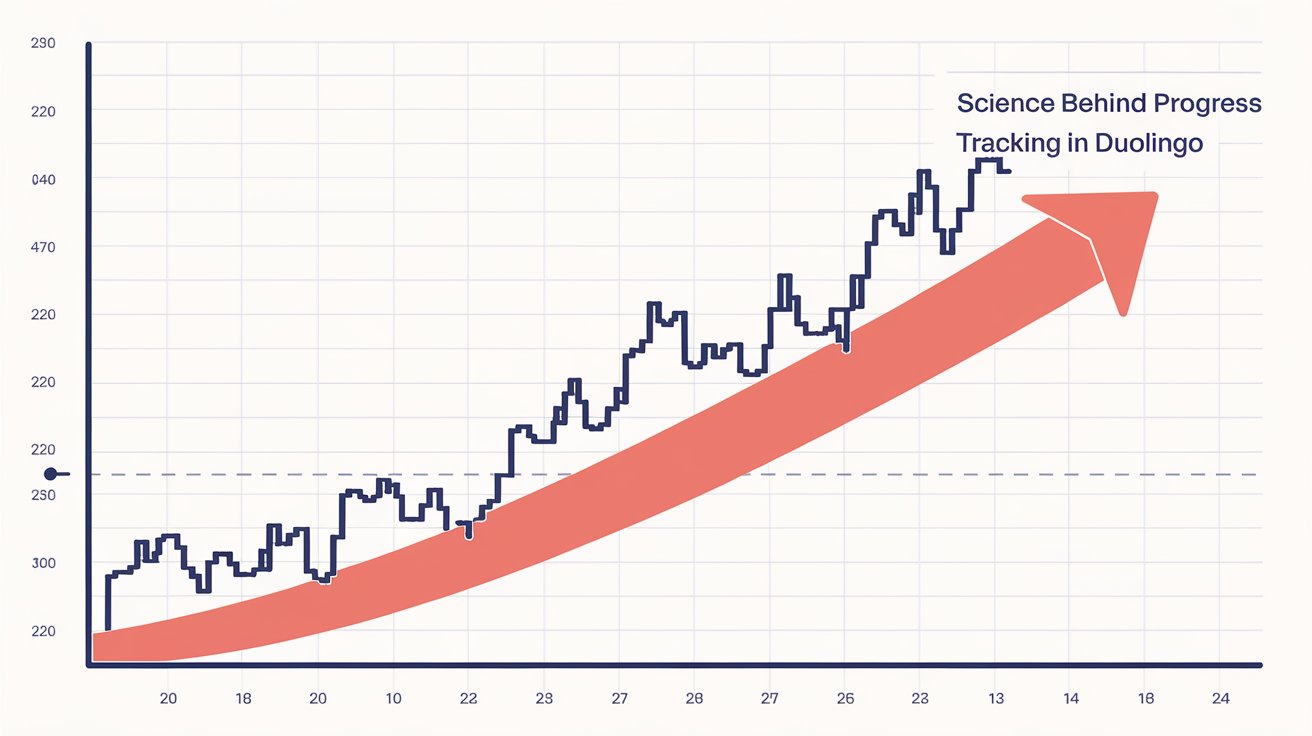
Duolingo’s progress tracking methods go beyond simple right or wrong answers. The platform employs sophisticated algorithms that measure not just accuracy, but also response time, pattern recognition, and long-term retention. This comprehensive approach to assessment aligns perfectly with CEFR guidelines while providing learners with meaningful feedback about their progress.
Understanding your current level becomes crystal clear through Duolingo’s scoring system, which ranges from 0 to 160. This score directly correlates with CEFR levels, making it easier for learners to understand their progress and set realistic goals. The system considers multiple factors, including consistency, accuracy, and the complexity of completed tasks.
Time Investment and Learning Expectations
Mastering a language through the CEFR framework requires dedicated effort and time. Duolingo’s system helps optimize this journey by providing clear milestones and achievable goals. Most learners reach basic proficiency (A1-A2) within 150-200 hours of focused study, though this timeline can vary based on several factors.
The journey to advanced levels (C1-C2) typically demands 700-800 hours or more of cumulative study time. However, Duolingo’s adaptive learning approach helps optimize this time investment by focusing on areas where you need the most practice, making every study session count toward your progress.
Practical Applications Across CEFR Levels
As you progress through each CEFR level, Duolingo ensures you’re developing practical, real-world communication skills. At A1-A2 levels, you’ll master basic travel situations and everyday conversations. Moving into B1-B2, you’ll develop the ability to discuss complex topics and handle professional situations with increasing confidence.
Advanced learners at C1-C2 levels find themselves able to navigate sophisticated communication scenarios, from academic discussions to professional negotiations. The platform’s content at these levels incorporates nuanced vocabulary and complex grammar structures, preparing learners for high-level language use in any context.
Maintaining Motivation Through the Levels
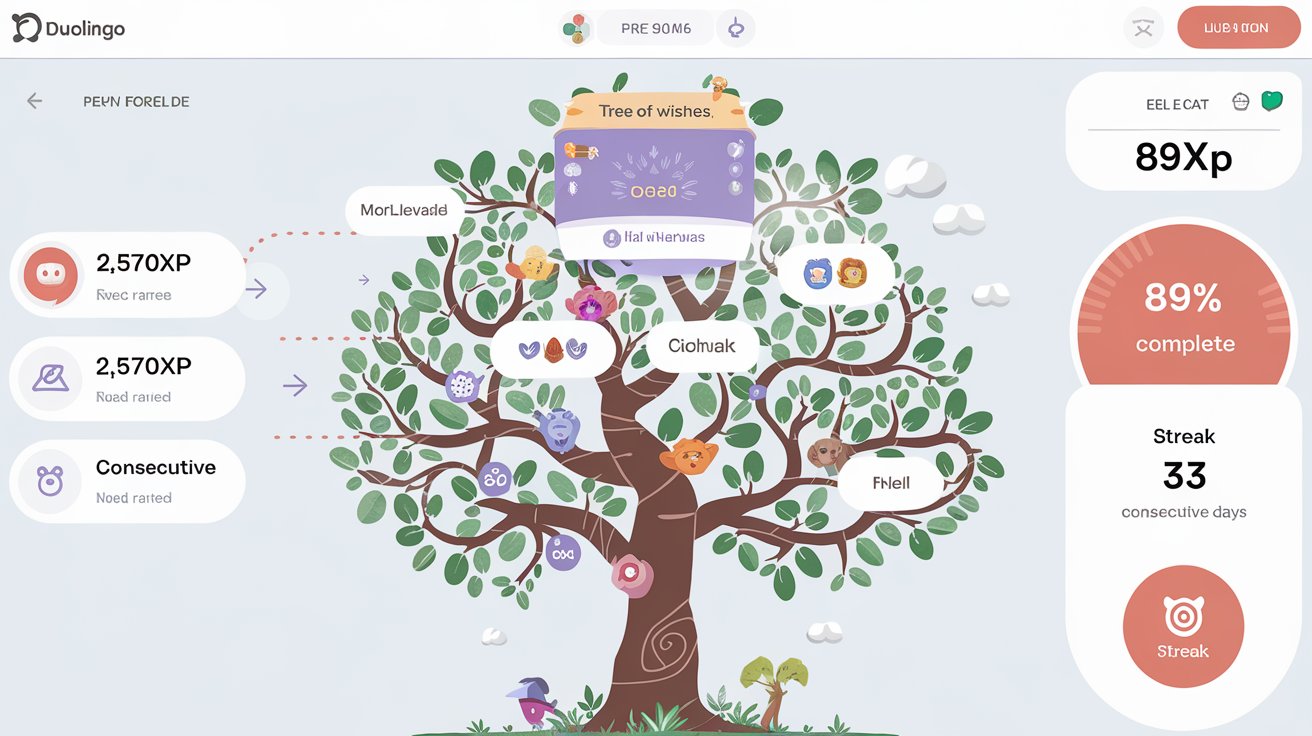
Staying motivated throughout your CEFR journey requires understanding that language learning is a marathon, not a sprint. Duolingo’s system incorporates various features to maintain engagement, from streak systems to league competitions. These elements create a powerful psychological incentive for daily practice while making the learning process enjoyable.
The platform’s approach to habit formation is particularly effective, utilizing daily reminders and rewards to establish consistent study patterns. Research shows it takes about 21 days to form a new habit, and Duolingo’s design capitalizes on this through its engagement features and reward systems.
- More Post: Duolingo vs Dinolingo: A Comprehensive Language Learning App Comparison
- More Post: The Definitive Guide: How Long Will It Take You to Learn French on Duolingo?
Advanced Learning Techniques
As you progress through higher CEFR framework levels, integrating multiple learning approaches becomes essential for mastery. Duolingo’s structured system serves as your foundation, but true fluency requires a comprehensive strategy. Advanced learners should combine the platform’s systematic lessons with immersive real-world practice. Consider engaging with native content like movies, podcasts, and literature that align with your CEFR level.
The platform’s Stories feature brilliantly bridges the gap between structured exercises and authentic materials, helping you develop natural language patterns. Additionally, participating in language exchange programs provides invaluable speaking practice, while writing journals in your target language reinforces grammar and vocabulary. These complementary activities, when aligned with your current CEFR level, create a powerful synergy that accelerates your progress toward fluency.
Future Developments in Language Learning

The evolution of the CEFR framework in digital learning continues to transform language education. Duolingo leads this innovation by incorporating cutting-edge technology that enhances the traditional CEFR approach. Advanced speech recognition technology now provides more accurate pronunciation feedback, while sophisticated AI algorithms adapt to individual learning patterns with unprecedented precision.
The platform is developing new features that will offer even more personalized CEFR-aligned learning paths, including virtual reality conversations and advanced pattern recognition for grammar correction. These technological advancements promise to revolutionize how learners progress through CEFR levels, making language acquisition more efficient and engaging than ever before. As artificial intelligence and machine learning continue to evolve, we can expect even more innovative tools that enhance the CEFR-based learning experience.
Optimizing Your CEFR Journey
While understanding the CEFR framework is crucial, knowing how to optimize your learning journey through each level can significantly impact your success. Duolingo’s system combines proven language acquisition methods with modern technology to ensure steady progress. The key lies in understanding how to maximize the platform’s features at each CEFR stage.
For instance, at the A1 level, focusing on pronunciation and basic vocabulary through Duolingo’s audio exercises lays a strong foundation. As you advance to A2, incorporating the platform’s conversation exercises helps develop natural speaking patterns. This systematic progression aligns perfectly with CEFR’s structured approach to language acquisition.
Adapting Learning Strategies by Level
Different CEFR levels require different learning approaches. At the beginning stages (A1-A2), Duolingo’s gamified lessons focus on building basic vocabulary and grammar through repetition and simple exercises. The platform introduces more complex sentence structures and idiomatic expressions as you progress to intermediate levels (B1-B2).
Advanced learners at C1-C2 levels benefit from Duolingo’s more sophisticated features, including detailed grammar explanations and cultural context. The platform’s personalized learning algorithm adjusts the difficulty and type of exercises based on your performance, ensuring you’re always challenged appropriately for your CEFR level.
Cultural Integration and Language Mastery
The CEFR framework recognizes that true language mastery goes far beyond vocabulary and grammar – it’s deeply intertwined with cultural understanding. Duolingo’s sophisticated approach integrates cultural elements naturally through context-rich lessons and real-world scenarios. For example, when learning French, students don’t just memorize phrases; they discover how French people typically greet each other, cultural traditions around mealtimes, and appropriate forms of address in different situations.
This cultural integration becomes increasingly vital as learners progress through higher CEFR levels. At B2 and above, the platform introduces nuanced cultural concepts like idioms, regional variations, and social customs that directly impact communication effectiveness. Understanding these cultural elements helps learners navigate complex social situations and avoid common cross-cultural misunderstandings, making them truly proficient in their target language according to CEFR standards.
Measuring Progress Beyond Scores

While numerical scores provide immediate feedback, the CEFR framework emphasizes a more holistic approach to measuring language proficiency. Duolingo embraces this philosophy by incorporating multiple assessment methods that align with CEFR’s comprehensive evaluation standards. The platform tracks not just correct answers, but also fluency, comprehension speed, and ability to use language in context.
Each CEFR level has specific ‘can-do’ statements, and Duolingo’s assessment system maps directly to these benchmarks. For instance, at B1 level, learners should be able to describe experiences, events, and ambitions – skills that Duolingo tests through various interactive exercises. The platform’s sophisticated algorithm considers factors like response time, consistency, and ability to handle increasingly complex language structures, providing a more complete picture of language proficiency that goes well beyond simple numerical scores.
Building Language Confidence with CEFR Standards
The CEFR framework uniquely emphasizes building learner confidence through practical application and error tolerance. Duolingo implements this philosophy by creating a supportive learning environment where mistakes are viewed as learning opportunities rather than failures. The platform’s lesson structure follows CEFR’s graduated approach, introducing new concepts at a pace that builds confidence systematically.
At each CEFR level, learners encounter carefully calibrated challenges that stretch their abilities without overwhelming them. For example, at A2 level, students might practice ordering food or asking for directions, while B1 learners tackle more complex tasks like expressing opinions on current events. This progressive difficulty aligns perfectly with CEFR’s emphasis on developing communicative competence through realistic scenarios.
Professional Applications and CEFR Standards
Understanding how the CEFR framework translates to professional settings is crucial for career-focused language learners. Each CEFR level corresponds to specific workplace competencies that employers recognize internationally. At B1, professionals can typically handle routine business situations, while B2 enables participation in detailed technical discussions and negotiations.
Duolingo’s professional content aligns with these CEFR benchmarks, offering specialized vocabulary and situations commonly encountered in business settings.
For instance, C1 level exercises might include complex email writing, presentation skills, and negotiation techniques. This targeted approach helps learners develop the specific language skills needed for their professional goals while maintaining CEFR’s rigorous standards.
Social Learning and CEFR Level Progression
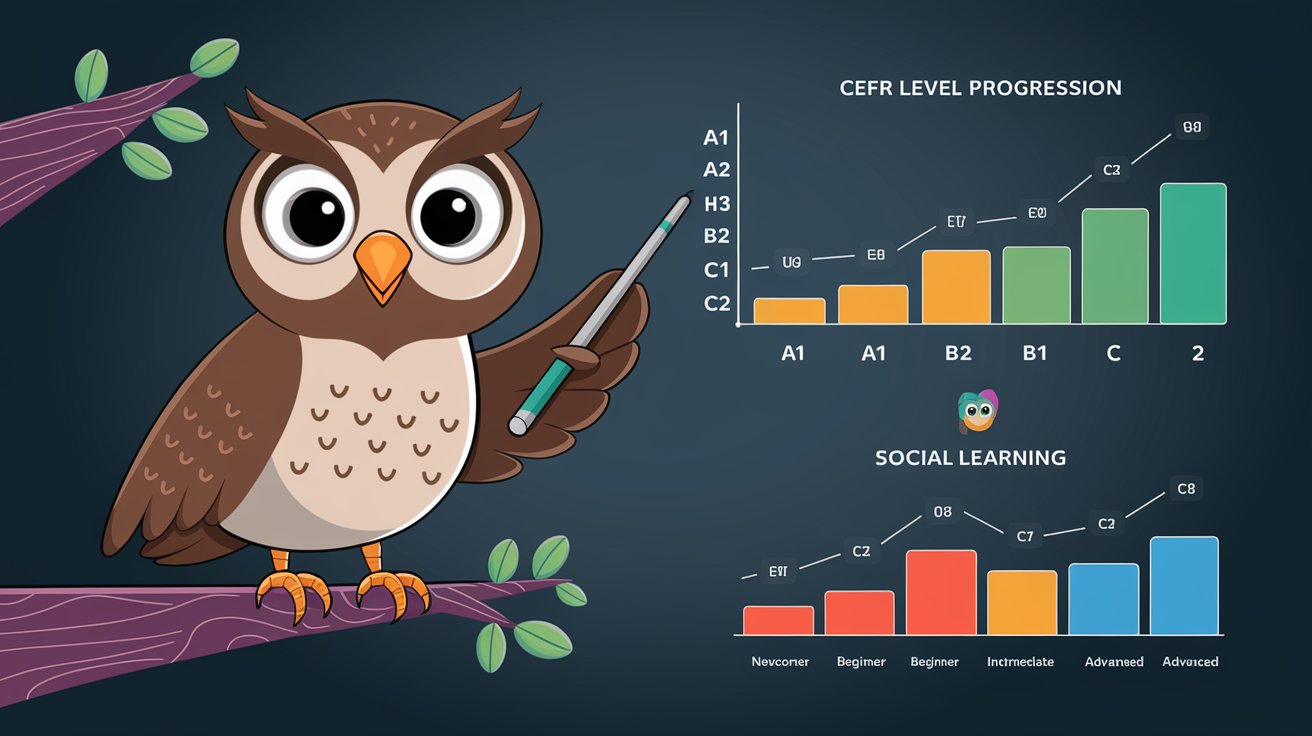
The social dimension of language learning plays a vital role in the CEFR framework, and Duolingo maximizes this through its community features. The platform’s social learning tools create opportunities for learners to practice with others at similar CEFR levels, fostering both motivation and authentic language use. These interactions help reinforce formal learning while providing real-world practice opportunities.
Duolingo’s forums and discussion groups are organized by CEFR level, allowing learners to find appropriate conversation partners and share resources. For example, B1 learners might practice discussing everyday topics, while C1 learners engage in debates about complex social issues. This structured approach to social learning ensures that interactions remain challenging yet accessible, supporting steady progress through CEFR levels.
Frequently Asked Question
What is the CEFR framework for Duolingo?
CEFR is a standardized system Duolingo uses to measure language skills from beginner to advanced across six levels.
What is A1, A2, B1, B2, C1, C2 language proficiency?
These are CEFR’s six proficiency levels, ranging from basic (A1-A2) through intermediate (B1-B2) to advanced (C1-C2).
What level of Duolingo is considered fluent?
Level C1 (reaching 130-150 on Duolingo’s scale) indicates fluency, allowing complex communication in most situations.
What Duolingo score is B2?
A Duolingo score of 100-125 corresponds to B2 level, indicating upper-intermediate language proficiency.
How long does it take to complete Duolingo?
Most language courses take 3-6 months of daily practice to reach intermediate level B1.
Is Duolingo Plus worth the money?
Duolingo Plus offers ad-free learning and offline access, beneficial for serious learners needing additional features.
Can Duolingo get you a job?
Duolingo certification is recognized by many employers, but additional language practice is recommended for professional roles.
Which Duolingo language is easiest?
Spanish and French are considered easiest for English speakers due to similar vocabulary and grammar.
Does Duolingo actually work?
Research shows Duolingo effectively teaches basic to intermediate language skills when used consistently.
How accurate is Duolingo’s placement test?
Duolingo’s placement test is about 80% accurate in determining your starting CEFR level.
Conclusion
Understanding how Duolingo integrates with the CEFR framework provides a clear pathway to language mastery. By combining this structured approach with consistent practice and effective study strategies, learners can achieve their language goals efficiently and enjoyably. Remember that every step forward brings you closer to fluency, and with Duolingo’s comprehensive system, you have all the tools needed for success.
Whether you’re learning for personal enrichment, professional development, or academic requirements, the combination of Duolingo’s innovative platform and the established CEFR framework creates a powerful system for achieving your language learning goals. Stay consistent, trust the process, and watch as your language skills grow systematically through each CEFR level.
Visit For More Blog’s: brieghtsvision.com

Welcome to Brieghtsvision.Com!
Your one-stop place for tips and guides to get the most out of Duolingo. Make learning a new language easier with helpful content for learners of all levels.
